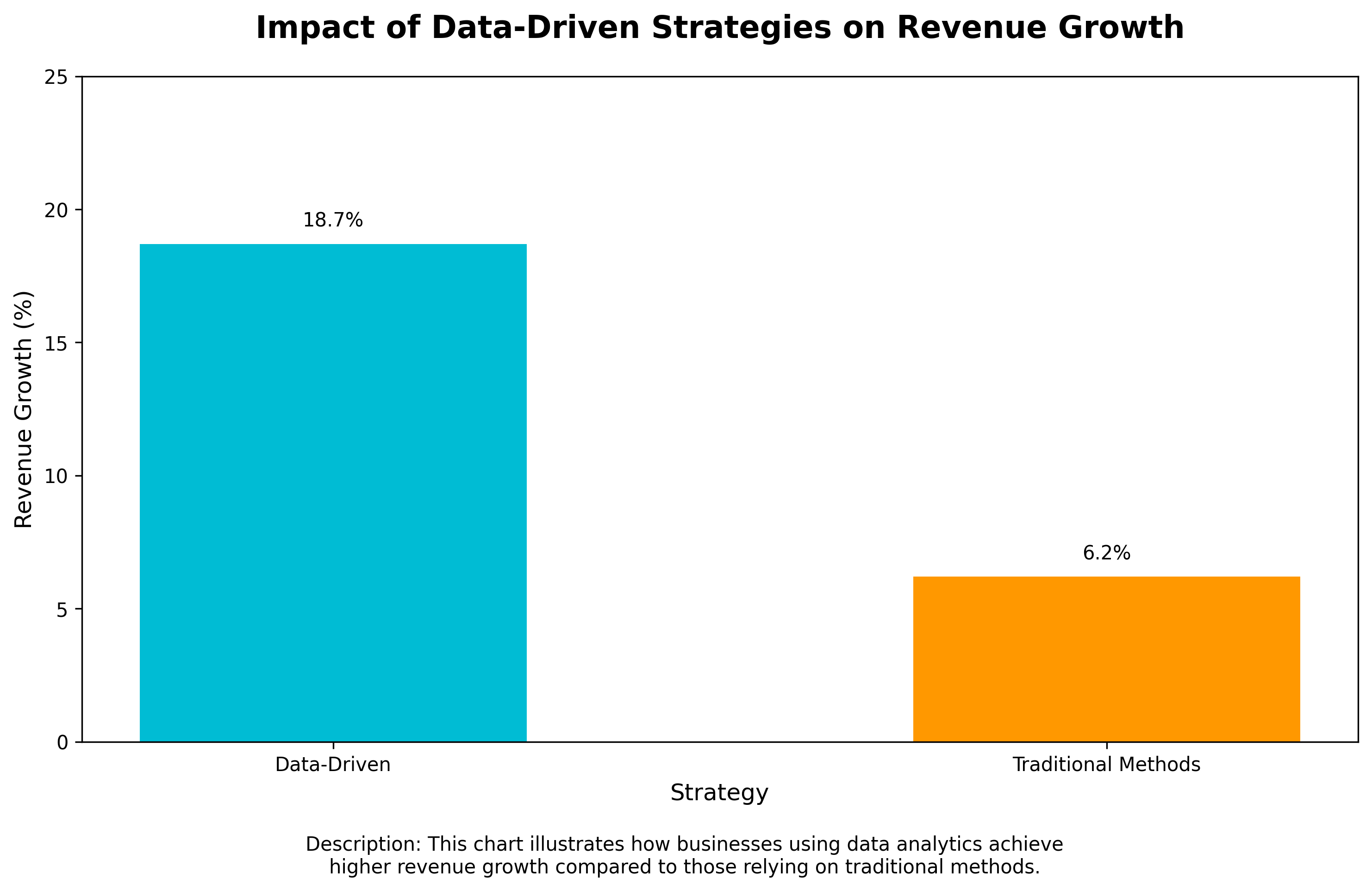
Data Analytics Services: Unlocking Business Growth Through Intelligent Insights
In today’s hyper-connected world, data has emerged as the new gold—a precious resource being generated every second through smartphones, computers, and IoT devices. For enterprises with access to this wealth of information, data analytics has become not just a competitive advantage but an essential tool for survival and growth in the digital economy.
The Power of Data Analytics in Modern Business
Data analytics is revolutionizing how organizations operate, transforming raw information into actionable insights that drive strategic decision-making. By helping enterprises understand consumer preferences, track market trends, and predict future outcomes, data analytics has swiftly become an indispensable tool for gaining competitive advantage.
The process involves examining raw datasets using sophisticated tools and techniques that enhance productivity, increase profitability, and provide organizations with the foresight necessary for informed decision-making. In today’s data-driven marketplace, accurately interpreting information isn’t optional—it’s the determining factor between progress and obsolescence.
Unveiling Hidden Business Assets Through Analytics
Every business possesses both tangible and intangible assets that hold untapped potential. Data analytics unlocks this value by:
- Transforming market challenges into opportunities
- Revealing insights about current performance and future possibilities
- Providing clarity on strategic resource allocation
- Uncovering the value in often-overlooked assets like customer relationships and brand reputation
Rather than simply examining financial statements or inventory levels, advanced analytics delves deeper, illuminating trends, behaviors, and growth opportunities previously invisible to traditional analysis methods.
Key Data Analytics Techniques Revolutionizing Business
1. Regression Analysis
Regression analysis examines relationships between variables, helping businesses predict outcomes. For example:
- Pricing strategies based on market demand
- Customer churn prediction by analyzing past behaviors
- Sales forecasting considering marketing spend and competition
This technique eliminates guesswork, enabling data-backed decision-making.
2. Monte Carlo Simulation
This probabilistic model helps businesses navigate uncertainty by simulating thousands of possible outcomes. Applications include:
- Stock market volatility analysis
- Supply chain risk assessment
- Consumer behavior modeling
Unlike traditional methods, Monte Carlo simulations provide dynamic, scenario-based insights, empowering businesses to make informed strategic moves.
3. Factor Analysis
Factor analysis simplifies complex datasets by identifying underlying patterns. Businesses use it to:
- Segment customer groups
- Optimize marketing strategies
- Improve operational efficiency
By reducing data dimensionality, companies gain clearer, actionable insights.
4. Cohort Analysis
This technique groups users by shared characteristics (e.g., sign-up date) and tracks their behavior over time. Benefits include:
- Identifying high-value customer segments
- Detecting drops in retention rates
- Tailoring marketing campaigns
For example, an e-commerce platform can analyze why April 2021 shoppers made fewer repeat purchases than March 2021 shoppers—revealing potential issues in pricing or competition.
5. Cluster Analysis
Cluster analysis groups similar data points, helping businesses segment customers based on behavior, demographics, or preferences.
- Netflix uses it to recommend personalized content, boosting user retention.
- Retailers apply it for targeted promotions, increasing conversion rates.
6. Time Series Analysis
This method examines data points over time to forecast trends. Businesses use it for:
- Sales seasonality predictions
- Inventory optimization
- Demand forecasting
For instance, an e-commerce store can adjust marketing spend before peak shopping seasons.
7. Sentiment Analysis
By analyzing customer feedback (reviews, social media), businesses gauge public sentiment about their brand. This helps in:
- Improving customer service
- Refining product offerings
- Crisis management
For example, analyzing thousands of survey responses reveals hidden customer frustrations, allowing proactive solutions.
Best Practices for Leveraging Data Analytics
To maximize the benefits of data analytics, businesses should:
- Embrace Data Democratization – Allow teams across departments to access insights for collaborative decision-making.
- Integrate Multiple Data Sources – Combine CRM, social media, and sales data for a holistic view.
- Use Predictive Analytics – Anticipate future trends and act proactively.
- Implement Real-Time Analytics – React swiftly to market changes.
- Leverage AI & Machine Learning – Automate data processing for faster, smarter insights.
- Ensure Data Quality & Security – Maintain accuracy and compliance with robust governance.
The Future of Data Analytics in Business
Emerging trends shaping the future include:
- Autonomous Analytics – AI-driven tools automating data interpretation.
- IoT Integration – Real-time insights from connected devices.
- Predictive & Prescriptive Analytics – Not just forecasting but recommending actions.
- Blockchain for Data Security – Ensuring transparency and trust in analytics.
Businesses that adopt these innovations will lead their industries, while those lagging behind risk disruption.
Tangible Benefits for Business Success
Organizations that effectively implement data analytics realize numerous competitive advantages:
- Informed Decision-Making – Replace gut feelings with fact-based strategies backed by concrete evidence.
- Operational Efficiency – Identify and eliminate bottlenecks that consume resources without delivering proportional returns.
- Customer Insights – Develop deep understanding of customer behaviors and preferences to create personalized experiences.
- Risk Management – Deploy predictive models to identify potential threats before they materialize.
- Innovation Catalyst – Discover emerging trends and opportunities that drive product development and market expansion.
- Marketing Effectiveness – Create targeted campaigns based on data-driven customer segmentation and preference analysis.
- Enhanced Customer Service – Analyze feedback systematically to address concerns proactively and build lasting loyalty.
Why Data Analytics Matters
The Challenge:
Businesses often struggle with:
- Overwhelming volumes of data from multiple sources.
- Difficulty in identifying patterns or trends.
- Lack of actionable insights to make informed decisions.
- Inefficient processes that hinder growth and profitability.
The Opportunity:
Companies that leverage data analytics effectively can:
-
Increase revenue by identifying untapped opportunities.
-
Optimize operations to reduce costs.
-
Enhance customer experiences through personalized strategies.
-
Stay ahead of competitors with predictive insights.
How We Help
Our data analytics services are designed to help you unlock the full potential of your data. We combine cutting-edge technology, advanced algorithms, and industry expertise to deliver actionable insights tailored to your unique business needs.
Our Approach:
1. Data Collection & Integration:
We consolidate data from multiple sources (CRM, ERP, social media, etc.) to create a unified view of your business.
2. Data Cleaning & Preparation:
We ensure your data is accurate, consistent, and ready for analysis.
3. Advanced Analytics:
Using machine learning, predictive modeling, and statistical analysis, we uncover hidden patterns, trends, and opportunities.
4. Visualization & Reporting:
We present insights in easy-to-understand dashboards and reports, enabling you to make informed decisions quickly.
5. Actionable Recommendations:
We don’t just provide insights—we offer actionable strategies to help you achieve your goals.
Real-World Example: Retail Success Story
Client: A national retail chain struggling to optimize inventory and marketing efforts.
Challenge:
- Inefficient inventory management led to stockouts during peak demand.
- Marketing campaigns were not targeted, resulting in low ROI.
Solution:
- We analyzed customer behavior, purchasing trends, and sales data.
- Identified peak sales periods and high-demand products.
- Developed targeted promotions and optimized inventory levels.
Results:
- 20% increase in revenue during peak seasons.
- 15% reduction in inventory costs by avoiding overstocking.
- 30% improvement in marketing ROI through personalized campaigns.
Key Benefits of Partnering With Us
- Boost Profitability: Identify revenue opportunities and cost-saving measures.
- Enhance Customer Experience: Personalize interactions based on data-driven insights.
- Improve Operational Efficiency: Streamline processes and reduce waste.
- Stay Competitive: Leverage predictive analytics to anticipate market trends.
Sample Chart:
Impact of Data-Driven Strategies on Revenue Growth

Why Choose Us?
- Expertise:Our team of data scientists and analysts has years of experience across industries.
- Custom Solutions:We tailor our services to meet your specific business goals.
- Cutting-Edge Tools:We use the latest analytics tools and technologies.
- Proven Results:Our clients consistently achieve measurable success.
Ready to Unlock the Full Potential of Your Data?
Let’s transform your data into a competitive advantage. Contact us today to schedule a free consultation and discover how we can help you achieve your business goals!




